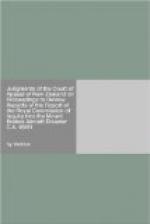Beyond argument, it would seem, there was slipshod work within the airline in the making of the change and the failure to expressly notify flight crews. But the allegations of deliberate concealment and a concocted story are another matter. The complaint is that they were never put squarely to the members of the navigation section. The Commissioner himself did put to the chief navigator, Mr Hewitt, that ‘Someone may suggest before the inquiry is over’ that the word ‘McMurdo’ was relayed to McMurdo to conceal a long-standing error in the co-ordinates. Mr Hewitt replied ‘Certainly not, sir’ and there, the applicants point out, the matter was left, without further questions to witnesses by anyone or any reference in counsel’s final submissions.
On the other hand Mr Baragwanath urged in substance that the witnesses from the navigation section must have understood that their evidence was under suspicion; that they had ample opportunities to explain how and why any mistakes occurred; and that it was for the Commissioner to assess their explanations, taking into account any impressions they made on him individually as witnesses.
Captain Eden
First Officer Rhodes, an accident inspector, had been one of the party who went to the Antarctica very shortly after the crash. He was representing the Air Line Pilots Association as well as working with others in the party. When he first gave evidence at the inquiry he was called by counsel for the association. Apparently concern was felt by the airline that some of his evidence might be taken to reflect on Captain Gemmell (the Flight Manager, Technical, and former Chief Pilot) so First Officer Rhodes was recalled as a witness by counsel for the airline. He said that he had ’no reason to doubt Captain Gemmell in any way shape or form’. There was some cross-examination by counsel for the association but no reference was made to Captain Eden in any of the questions. The Commissioner said in paragraph 348 of his report:




